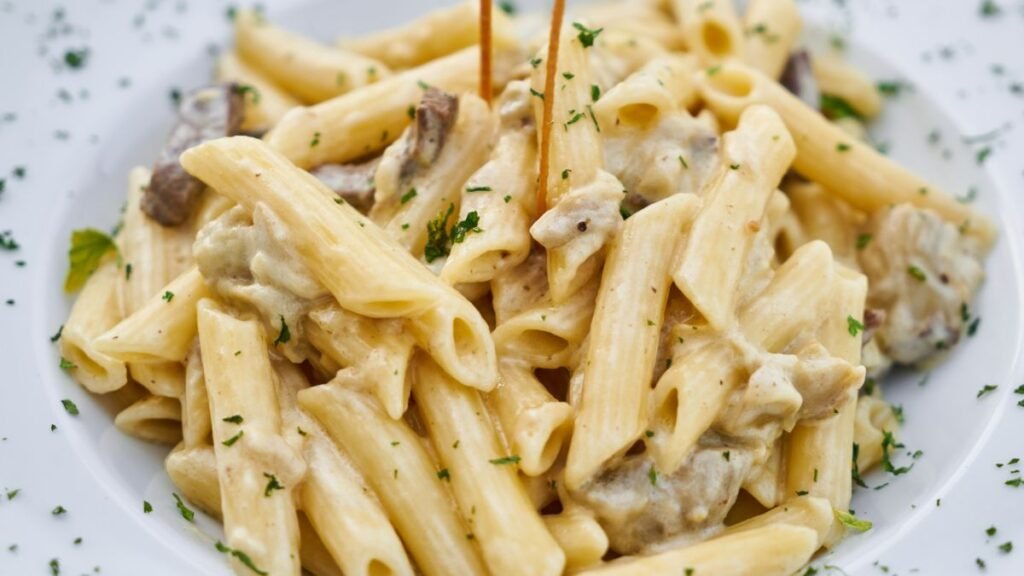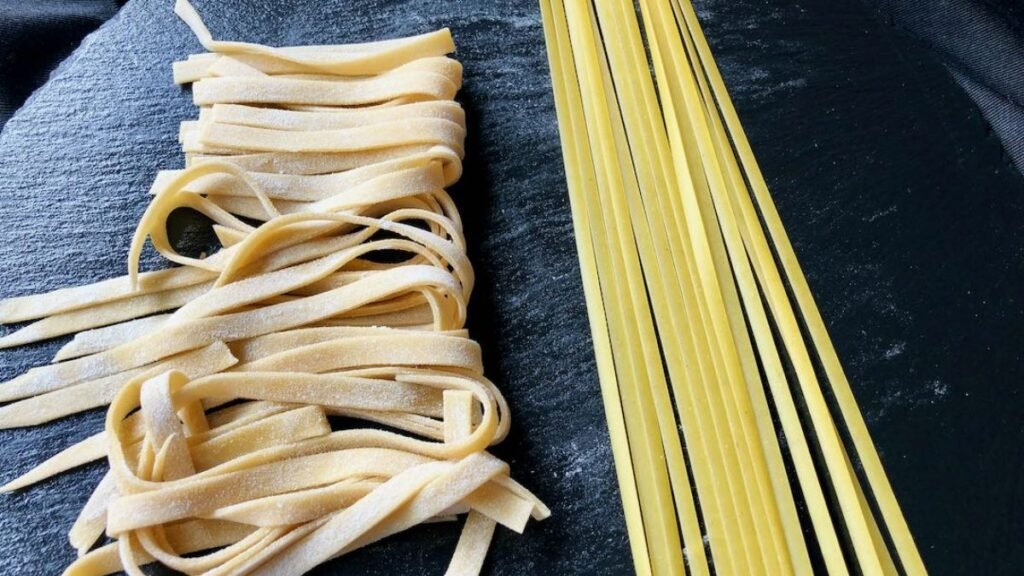Everything You Need to Know About Pasta | Dried vs Fresh Pasta | 5 Amazing Facts
Pasta is one of the world’s most accessible foods. Nearly every country has its own unique version of this popular, inexpensive delicious food. When we talk about pasta, we must first define the term. The word pasta is generally used to describe traditional Italian noodles, which differentiates it from other types of noodles around the world.

While we do think of pasta as culturally Italian food, it is likely the descendent of ancient Asian noodles. The use of durum wheat sets pasta apart from other forms of noodles. Durum wheat’s high gluten content and low moisture make it perfectly suited to pasta production. The durum wheat dough is pressed into sheets, then cut into a variety of shapes, and cooked before serving.
In terms of nutrition, cooked plain pasta is 31% carbohydrates, 6% protein, and low in fat, with moderate amounts of manganese, but pasta generally has low micronutrient content, and pasta may be enriched or fortified, or made from whole grains.
Pasta’s is divided into two categories: dried (pasta secca) and fresh (pasta Fresca). Most dried pasta is produced commercially via an extrusion process, although it can be produced at home.
Fresh pasta is traditionally produced by hand, sometimes with the aid of simple machines. Fresh pasta available in grocery stores are produced commercially by large-scale machines. Both dried and fresh pasta’s come in a number of shapes and varieties, with 310 specific forms known by over 1300 documented names.
In Italy, the names of specific pasta shapes or types often vary by locale. The pasta form cavatelli is known by 28 different names depending upon the town and region. Common forms of pasta include long and short shapes, tubes, flat shapes or sheets, miniature shapes for soup, those meant to be filled or stuffed, and specialty or decorative shapes.
The Difference Between Fresh and Dried Pasta
Fresh pasta and dried pasta are actually two completely different types of pasta. Not all pasta begins life as fresh pasta. The two types of pasta are actually composed of unique ingredients, which end up resulting in two products that are basically two entirely different foods. Dried pasta is made with a different kind of dough and without eggs, which, along with flour, are the primary ingredients in fresh pasta. The two separate preparations produce disparate textures, tastes, colors.

Fresh Pasta:
Fresh pasta is more common in northern Italy. It tends to be more expensive than dried and also must be refrigerated. Fresh pasta contains eggs and additional water, and it’s more tender than dried and takes about half the time to cook. Its delicate texture is best with light sauces made with tomatoes, cream, oil, or butter flavored with herbs and Fresh pasta is far smoother than dried pasta
Dried Pasta:
There are roughly 300 different shapes and varieties of dried pasta in Italy, even counting regional differences. Shapes range from simple tubes to bow ties to unique shapes like tennis rackets. Many, but not all of these types, are usually available wherever pasta is made. By Italian law, dried pasta must be made with 100% durum semolina flour and water. However, there are two factors in dried pasta from Italy that make it typically better than most other products: extrusion and drying methods.
Where pasta was invented?
Pasta has been a favored family food for countless years – so long that many people often question where exactly pasta came from and we do think of pasta as culturally Italian food, it is likely the descendent of ancient Asian noodles. A common belief about pasta is that it was brought to Italy from China by Marco Polo during the 13th century. pasta has been eaten by many different cultures through a large number of time periods.
How many types of pasta are there?
There are approximately 350 different types of pasta around the world. The most popular ones are penne, macaroni, butterfly, spaghetti, and bowtie(butterfly).
Why does pasta come in so many shapes?
There are more than 350 shapes of pasta and chefs use different shapes and sizes of pasta for the different recipes because certain shapes hold different sauces better than others. Thin pasta, such as angel hair works better with thin oil-based sauce, while thicker sauces work better with heavier and thicker pasta’s
Popular Types of Pasta and When to Use Each One
Capellini/Angel hair
Capellini is popularly known as Angel hair in English, Angel hair is long, very thin, delicate strands of pasta. Chunky sauces can be too heavy for it, so go with a thin cream sauce or just toss it with compound butter and lots of herbs.
Cannelloni
Cannelloni is a cylindrical (large tube-shaped) type of lasagna generally served baked with a filling and covered by a sauce in Italian cuisine. Because of the size, it’s the ideal specimen for stuffing with fillings such as cheese or sauce and is often baked as a casserole.
Macaroni
Macaroni is dry pasta shaped like narrow tubes. Made with durum wheat, macaroni is commonly cut in short lengths; curved macaroni may be referred to as elbow macaroni. Think of the hollow space inside these small, bent tubes of pasta and cream sauces, melty cheeses or tomato sauces without many chunks can all stuff themselves in macaroni, yielding flavorful results. And of course, let’s not forget about classic macaroni and cheese!
Pappardelle
Pappardelle is large, very broad, flat pasta noodles, similar to wide fettuccine, originating from the region of Tuscany. The fresh types are two to three centimeters wide and may have fluted edges, while dried egg pappardelle have straight sides These flat ribbons of pasta are almost like fettuccine, but significantly wider and built to hold up to sturdy sauces. So bring on the thick, chunky meat sauces for this workhorse pasta.
Penne
Penne is an extruded type of pasta with cylinder-shaped pieces, their ends cut at a bias. Penne is the plural form of the Italian penna, deriving from Latin penna, and is a cognate of the English word pen. These medium-sized, ridged tubes of pasta feature edges cut at a diagonal. Penne pairs well with a number of sauce types, including cream, tomato, or meat-based sauces. Try to keep the consistency of sauces less chunky though, as you want the sauce to flow into the hollow tubes of pasta and imbue them with flavor.
Rotelle
Rotelle is a type of pasta resembling wheels with spokes. They are similar to Fiori. The name derives from the Italian word for “little wheels”. In Italy they are also called “ruote”, and in the US they are usually called “wagon wheels”. This little wagon wheels are often referred to as “wagon wheel pasta.” Thick but not-too-chunky cream and tomato sauces work well with rotelle, and it’s also well suited to pasta salad dishes.
Facts:
- The traditional Italian way of cooking pasta is known as ‘al dente’.
- If pasta is cooked properly, it should stick to a wall when it is thrown.
- The average Italian eats more than 51 pounds of pasta per year.
- Different pasta requires different sauces.
- Pasta will make you happy – According to science, pasta can actually make you happy on a deeper level. That’s because there are lots of carbohydrates in pasta. These carbs will increase the amount of serotonin in the body, which many scientists believe will bring about feelings of happiness and well-being.

